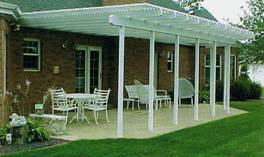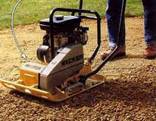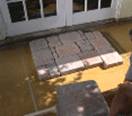Patio Pavers Installation Guide
Patio applications on a residential property can add elegance and panache to the appearance of your landscaped gardens and surrounding areas. A patio construction can be a freestanding structure for the purpose of extra outdoor living space. It is built away from the house where you can sit back, relax or entertain family and friends. The other structure of patios is an extension that is attached to the house in the front or back.
Patio applications require a flooring installation. There is vast majority of patio flooring for your selection that includes many types of materials such as concrete, brick and stone pavers. There are beautiful designs, patterns that can be achieved due to the color and size availability. |
 |
If you're a handy man and you have decided to undertake the installation process yourself, it is essential that you have good planning and good preparation that is crucial to a successful installation. The installation process will cost you a lot less then having to hire a contractor.
Base Preparation
Choosing the material, design, pattern, color and size is a personal choice and is based on personal requirements. To collate more ideas on patio flooring styles and designs, read through garden magazines, take a walk in your neighborhood or search the web sites that are available on the Internet. Here are some helpful tips:
|
 |
Base Material for Patio Paver Installation
 |
For brick, concrete and stone pavers patio installation the base material should be applied with gravel base or sand based materials. Gravel base is a mixture of small rocks and dirt that needs to be half an inch to three quarters in depth for compaction so there is no paver's movement or buckling in time. Sand base material is a mixture of coarse sand and cement. |
The depth of sand base should be approximately one to two inches in depth for compaction. For level grounding base materials the depth should be consistent throughout. For sloping patio installations, the base material depth will increase depending on the slope requirements.
Laying Patio PaversA straight string line is very helpful to ensure straight direction is followed while installing pavers. After the compaction process has been finalized, you can start laying them. For small patio applications your starting point should commence at one end of the area laying the pavers from the right side to the left side then left side to right side format. |
 |
A rubber hammer should be used to reinforce the pavers in place so no movement occurs while applying the next ones. On completion of patio paver's installation, a dry mixture of sand and cement should be applied to the paved area for filling the gaps in between.
Patio Structure
 |
The design structure of patio you choose may be available in a kit form containing all the necessary components. The patio kit contains roofing materials, pole structures and all required nuts and bolts. The patio structure kit also contains written step by step installation instructions. |





